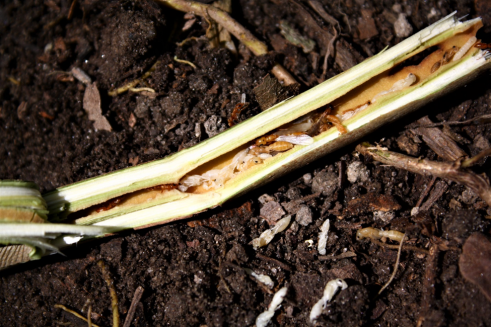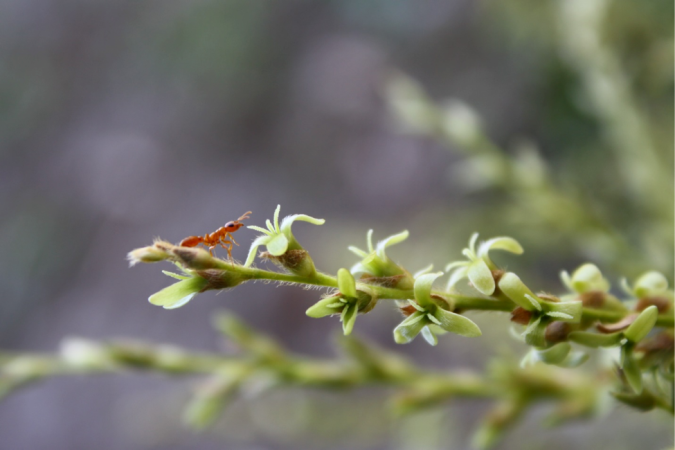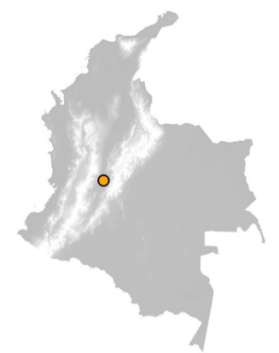A blog post highlighting the article by Insectes Sociaux
By Parry Macdonald Kietzman
The remarkable system of communication used by honey bees to coordinate their daily activities is well known, though most people are primarily aware of the waggle dance. This positive feedback signal is one that communicates the distance and direction of some item of interest, most commonly a food source, to a worker bee’s nestmates. Perhaps less well-known is the stop signal, an acoustic negative feedback signal that can be used as a counter to the waggle dance, inhibiting recruitment and decreasing foraging (reviewed in Kietzman and Visscher 2015).
One use of the stop signal occurs when foragers encounter danger, such as an attack from other bees or a predator, at a food source (Nieh 2010). Nieh (2010) simulated such attacks at a feeding station by pinching foragers’ legs with forceps. Back at the hive, these foragers were then much more likely to use the stop signal on other bees advertising that same location with the waggle dance than they were on dancers advertising other food sources.

Parry observing the honey bee dance floor in her two-frame observation hive.
Our experiment was originally intended as a pilot study with the goal of practicing a method similar to Nieh’s (2010) technique of pinching bees’ hind femurs during their visits to a feeding station so that we could then use that technique in a later study. We established a colony of bees in a two-frame observation hive (1/4 or 1/5 a regular-sized hive with observation windows on the sides) on the premises of the University of California, Riverside’s Agricultural Operations. We trained the bees to visit a feeding station baited with sugar water 100m away from the hive, and an observer there gently caught visiting foragers in a small net and marked them on the thorax with one of two colors of paint pen depending on which treatment they received.
Using a coin toss to help randomize the treatments, approximately half the visiting foragers were “attacked” with a pinch to the hind femur and the other half were not. I watched the marked bees’ waggle dances back at the hive and recorded them using an HD video camera. A detailed analysis of the video recordings revealed that bees that had not been pinched at the feeder performed significantly more and longer waggle dances than the bees that had been pinched. Additionally, the pinched bees produced significantly more stop signals upon their return to the hive than the unpinched bees.
These results were very much in line with what we expected based on Nieh’s (2010) findings, however, we also made the surprising observation that most of the stop signals we recorded—about 70%–were performed by unmarked bees that had probably never visited the feeding station at all.
Though we don’t have a definitive answer for why so many unmarked bees used the stop signal on dancers advertising the feeding station, there are a few possible explanations. One is that the unmarked bees may have been foraging at another location and were not promptly unloaded upon their return to the hive because the unloader bees were overwhelmed by the influx of food coming from the feeding station. Stop signaling has often been found to increase when the bees have access to a feeding station (reviewed in Kietzman and Visscher 2015), and most of this stop signaling is produced by tremble dancers. Foragers perform the tremble dance when they are not unloaded quickly (Seeley 1992), so if there were insufficient unloader bees available due to the large amount of food coming from the feeding station then this could account for the stop signaling performed by unmarked bees.
A second explanation is that the stop signalers could have been unloader bees rather than foragers, and that these bees were using the stop signal in an attempt to decrease what had become an unmanageable number of foragers exploiting the feeding station. This use of the stop signal, while plausible, has not yet been measured and would likely be an interesting and productive area of study.
Finally, a rich, unlimited source of food such as a feeding station can readily be compared to hive robbing rather than typical foraging on flowers. Johnson and Nieh (2010) modeled a robbing event and showed that the stop signal could successfully be used to quickly shut it down, which would be beneficial if the robbed hive were very strong and an excessive number of robbing foragers were being killed. It is possible that the pinched bees from our experiment were emitting alarm pheromone (signaling a threat to the other bees), and that other bees in the colony interpreted this as evidence that they had been present during a robbing situation. If this were the case, the stop signaling we observed could have been an attempt to shut down what was perceived as an unfavorable robbing event.
Clearly, we have yet to decipher all the meanings of what is a versatile and effective communication signal.

Photo: Rachael Bonoan/flickr
References
Johnson, BR and Nieh, JC. 2010. Modeling the adaptive role of negative signaling in honey bee intraspecific competition. Journal of Insect Behavior 23: 459-471.
Kietzman, PM and Visscher, PK. 2015. The anti-waggle dance: use of the stop signal as negative feedback. Frontiers in Ecology and Evolution 3: 54-58.
Nieh, JC. 2010. A negative feedback signal that is triggered by peril curbs honey bee recruitment. Current Biology 20: 310-315.
Seeley, TD. 1992. The tremble dance of the honey bee: messages and meanings. Behavioral Ecology and Sociobiology 31: 375-383.
Figure 1: observing waggle dances and stop signals.


